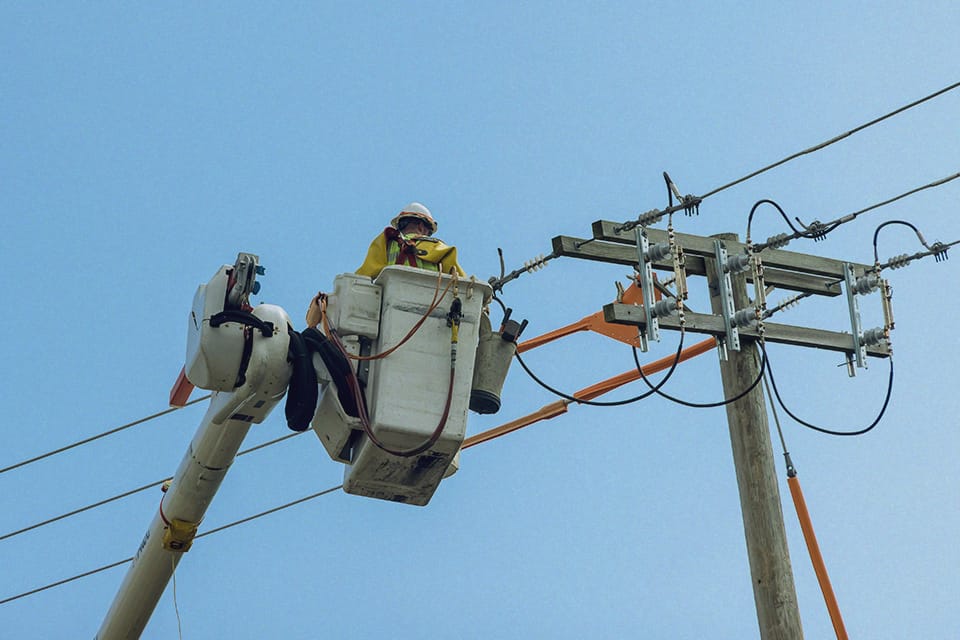
Digital Transformation in Contractor Risk Management for Utilities

Digital transformation is revolutionizing contractor risk management for utilities by leveraging advanced technologies to improve efficiency, scalability, and compliance. In the utilities sector, contractor risk management is crucial for ensuring safety, maintaining compliance, and achieving operational effectiveness. Digital tools and systems now provide utilities with innovative ways to manage contractor-related risks more effectively.
Understanding Contractor Risk Management
Contractor risk management involves identifying, assessing, and mitigating the risks associated with hiring external contractors. Utilities depend heavily on contractors for critical services, such as maintenance, construction, and auxiliary roles. The complex, safety-sensitive nature of utility operations makes effective contractor risk management essential for protecting public safety, regulatory compliance, and organizational reputation. Without proper contractor risk management strategies, utilities face increased risks of accidents, project delays, and compliance violations.
Case Study: Improving Contractor Safety at One Utility
A mid-sized utility company struggled with managing contractor safety using outdated, paper-based processes. The traditional methods were slow and lacked real-time visibility, making contractor risk management challenging. To address these issues, the utility implemented a digital platform that integrated contractor data from various sources, including worker training verification, automated reporting systems, and a centralized risk management database. This transformation delivered significant improvements:
- 30% Reduction in Safety-Related Incidents: By implementing rigorous pre-qualification processes, credentialing, verification of contractors’ policies, and tracking training, the company increased hazard identification and reduced risks.
- 15% Improvement in On-Time Project Completion: Enhanced communication and decision-making streamlined workflows, reducing project delays.
- Improved Supply Chain Satisfaction: Better communication and feedback mechanisms led to higher levels of collaboration and contractor satisfaction.
These results highlight the transformative potential of digital tools in contractor risk management for utilities, demonstrating improved safety, efficiency, and stakeholder satisfaction.
The Imperative for Digital Transformation in Utilities
Utilities operate in an environment shaped by regulatory pressures, environmental concerns, and the need for consistent operational improvement. As contractor engagements become more complex, traditional methods of contractor risk management—reliant on manual processes and fragmented data—are proving inadequate. Digital transformation introduces advanced tools that enhance real-time visibility into contractor performance and facilitate more informed decision-making. Utilities adopting digital solutions for contractor risk management can better navigate the challenges of modern operations and achieve superior outcomes.
Core Components of Digital Transformation in Contractor Risk Management
1. Data Integration and Management
Data integration is a cornerstone of digital transformation in contractor risk management. Traditional systems often rely on siloed data sources, resulting in inconsistent and outdated information. Digital platforms enable utilities to consolidate contractor performance records, safety documentation, and compliance logs into centralized repositories. Dashboards provide utility managers with real-time insights, allowing them to identify trends and potential issues quickly. Comprehensive data integration improves decision-making by offering timely and accurate information for assessing contractor risks.
2. Enhanced Contractor Selection and Onboarding Processes
Contractor selection is a critical element of effective contractor risk management. Traditional methods of selecting contractors are typically manual, prone to errors, and time-consuming. Digital transformation streamlines this process by leveraging advanced analytics and algorithms to evaluate contractors based on specific criteria, including historical performance, compliance records, safety metrics, and certifications. This approach enhances transparency and reduces bias during the selection process.
3. Compliance Monitoring and Safety Enhancements
Compliance with regulatory standards is a critical aspect of contractor risk management in the utilities sector. Digital transformation introduces advanced compliance management tools that enable continuous monitoring of contractor activities. These tools ensure adherence to safety regulations and operational guidelines by providing real-time updates and automated alerts for non-compliance.
Additionally, the integration of Internet of Things (IoT) devices enhances safety monitoring. Wearable technology, for example, can track contractors’ on-site conditions and notify managers of deviations from safety protocols. Proactive safety measures enabled by digital tools help prevent incidents and foster a safer work environment.
4. Predictive Analytics for Proactive Risk Management
Predictive analytics is revolutionizing contractor risk management by enabling utilities to anticipate and mitigate potential risks before they escalate. Machine learning algorithms analyze historical data to identify patterns and predict issues such as project delays, compliance violations, or budget overruns. Utilities can use these insights to take corrective actions, such as reallocating resources, revising schedules, or addressing underperformance.
Dynamic risk modeling, another application of predictive analytics, allows utilities to simulate various scenarios and evaluate their impacts. This capability empowers managers to develop strategic responses that minimize risk exposure and improve project outcomes.
5. Collaborative Platforms for Stakeholder Engagement
Digital transformation facilitates collaboration among stakeholders involved in contractor risk management. Online platforms enable seamless communication between utility managers, contractors, regulatory bodies, and other parties. Real-time updates and notifications ensure transparency in project developments and compliance statuses. Collaborative tools also support feedback loops, allowing contractors to share insights or concerns that inform future risk assessments and engagement strategies.
Challenges and Considerations in Digital Transformation
While digital transformation offers substantial benefits, it also presents challenges that utilities must address to ensure successful implementation.
1. Integration Complexity
Integrating new digital systems with existing processes can be complex. Utilities may encounter compatibility issues with legacy software and databases, complicating data migration. Careful planning and thorough assessments of current systems are essential to mitigate these challenges.
2. Cultural Resistance to Change
Resistance to change is a common obstacle when introducing digital transformation. Employees accustomed to traditional methods may hesitate to adopt new technologies. To address this, utilities should emphasize the benefits of digital transformation and provide ongoing training to enhance employees’ digital skills and confidence.
3. Financial Investment
Digital transformation often requires significant upfront investment in technology, training, and infrastructure. Utilities must carefully evaluate the potential return on investment (ROI) by considering the efficiencies and risk reductions achieved through digital tools. Demonstrating long-term benefits can help justify the financial commitment.
4. Cybersecurity Concerns
Adopting digital tools for contractor risk management introduces cybersecurity risks that utilities must address. The integration of interconnected systems, data sharing, and IoT devices creates vulnerabilities that malicious actors could exploit. Robust cybersecurity measures are crucial for safeguarding sensitive contractor data and ensuring operational integrity.
a. Increased Attack Surface
Digital platforms expand the attack surface for potential cyberattacks. Utilities must implement rigorous security protocols to protect interconnected contractor management systems from unauthorized access and breaches.
b. Data Privacy and Protection
Utilities handle vast amounts of sensitive contractor data, project details, and customer information. A data breach can result in regulatory penalties, reputational damage, and financial losses. Comprehensive data protection measures, including encryption and access controls, are essential for mitigating these risks.
c. Insider Threats
Insider threats—whether intentional or accidental—pose significant cybersecurity challenges. Utilities should implement stringent access controls, monitoring systems, and user training to reduce risks from internal actors.
d. Regulatory Compliance
Utilities must stay informed about changing data privacy and cybersecurity regulations. Developing a compliance framework ensures that contractor management processes align with regulatory requirements, minimizing legal and financial risks.
e. Incident Response Planning
No system is immune to security breaches, making incident response plans essential. These plans should outline procedures for detecting, responding to, and recovering from cybersecurity incidents, including roles, communication strategies, and external reporting protocols.
f. Collaboration with Cybersecurity Experts
Partnering with cybersecurity specialists can provide utilities with access to advanced security technologies and expertise in risk mitigation. Collaboration is particularly beneficial for smaller utilities with limited internal resources.
Conclusion
Digital transformation is revolutionizing contractor risk management in the utilities sector by introducing advanced data management systems, streamlining contractor selection, enhancing compliance monitoring, and leveraging predictive analytics. These innovations improve safety, operational efficiency, and stakeholder satisfaction. However, utilities must also address the cybersecurity challenges that come with adopting digital tools. By prioritizing robust security measures, ongoing training, and compliance frameworks, utilities can protect sensitive data, maintain trust, and ensure operational integrity.
The future of contractor risk management lies in a balanced approach that combines technological innovation with proactive risk mitigation and security. Utilities embracing this comprehensive strategy will be better equipped to navigate industry challenges, deliver safer operations, and build resilience in an evolving landscape.
About the Author
James A. Junkin, MS, CSP, MSP, SMS, ASP, CSHO is the chief executive officer of Mariner-Gulf Consulting & Services, LLC and the chair of the Veriforce Strategic Advisory Board and the past chair of Professional Safety journal’s editorial review board. James is a member of the Advisory Board for the National Association of Safety Professionals (NASP). He is Columbia Southern University’s 2022 Safety Professional of the Year (Runner Up), a 2023 recipient of the National Association of Environmental Management’s (NAEM) 30 over 30 Award for excellence in the practice of occupational safety and health and sustainability, and the American Society of Safety Professionals (ASSP) 2024 Safety Professional of the Year for Training and Communications, and the recipient of the ASSP 2023-2024 Charles V. Culberson award. He is a much sought after master trainer, keynote speaker, podcaster of The Risk Matrix, and author of numerous articles concerning occupational safety and health.




